Rockwell Files: Freshening Up Our Logo
To reflect its new, modern style in 1961, the Post underwent a major redesign. The magazine changed its editor, layout, typography, and, especially, its logo. Norman Rockwell celebrated the change on the September 16 cover by painting Herbert Lubalin, who created the new Post logo, at his drafting table. The cover was a humorous allusion to a cover Rockwell had painted in 1938 in which the artist portrayed himself surrounded by discarded sketches, staring at a blank canvas and scratching his head in search of a fresh idea.
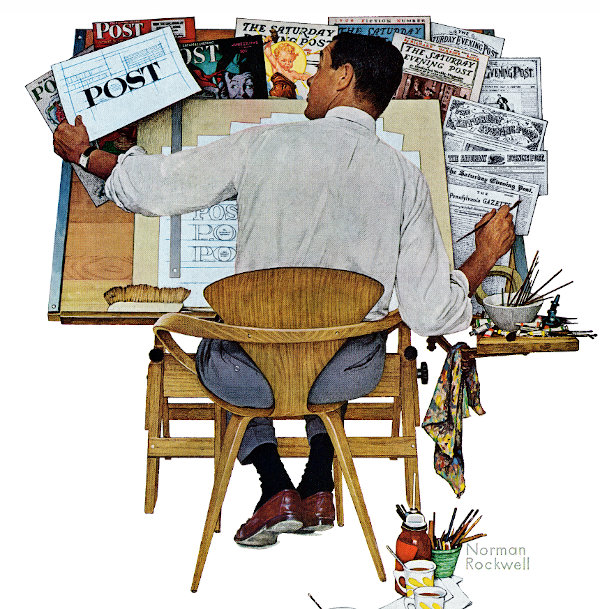
To emphasize the Post’s long history on this cover, he tucked copies of 11 previous Post cover illustrations around the work table. He even included a copy of the Pennsylvania Gazette, founded by Benjamin Franklin in 1728, from which the Post was born.
A cover recalling the Post’s long history is appropriate, we feel, as we approach 2021 — a very special year for the magazine. On August 4, 2021, we will be 200 years old. We think Norman would be proud. We certainly are.
This article is featured in the November/December 2020 issue of The Saturday Evening Post. Subscribe to the magazine for more art, inspiring stories, fiction, humor, and features from our archives.
Featured image: Norman Rockwell / © SEPS
Rockwell Video Minute: Elect Casey
See all of the videos in our Rockwell Video Minute series.
Featured image: (Norman Rockwell / © SEPS)
Norman Rockwell Paints America at the Polls
This description and illustrations appeared in the November 4, 1944, issue of the Post.
It would be hard to name anything more thoroughly American than the grand and glorious event which takes place on a certain Tuesday of every fourth November. To portray this national phenomenon, to capture its traditional spirit, we could think of no living artist better equipped with native understanding than Norman Rockwell. In his search for a truly representative background, Rockwell went straight to the heart of America; specifically, to Cedar Rapids, Iowa. By the time his pictorial preview was completed, he had created a new character: The human, likable citizen who adorns these pages and the cover of this Post. We have christened him Junius P. Wimple. You will, we hope, see more of him in Posts to come.
Rockwell, we reasoned, always knows his characters through and through. As Wimple’s creator, he knows how Wimple thinks, feels—and votes. Therefore, why not trick the artist into revealing Wimple’s secret, and thus learn the outcome of the election before it takes place? So we wired Rockwell: “Which one is Wimple voting for?” Promptly, the guileless artist answered by wire, collect: “For the winner.”
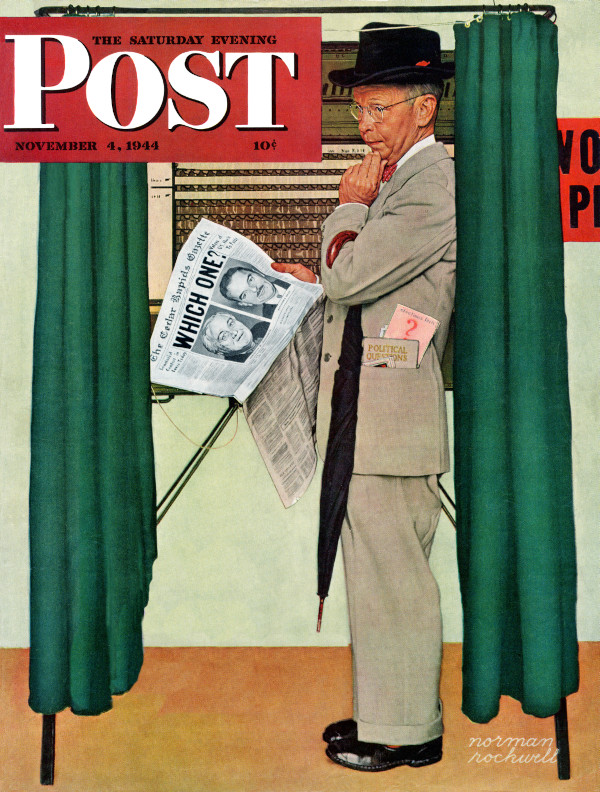
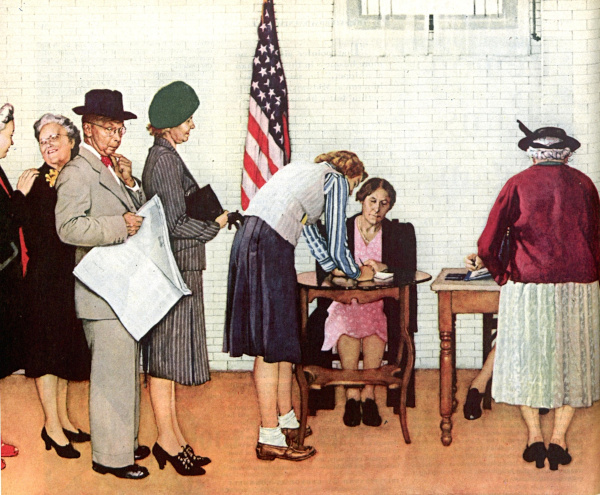
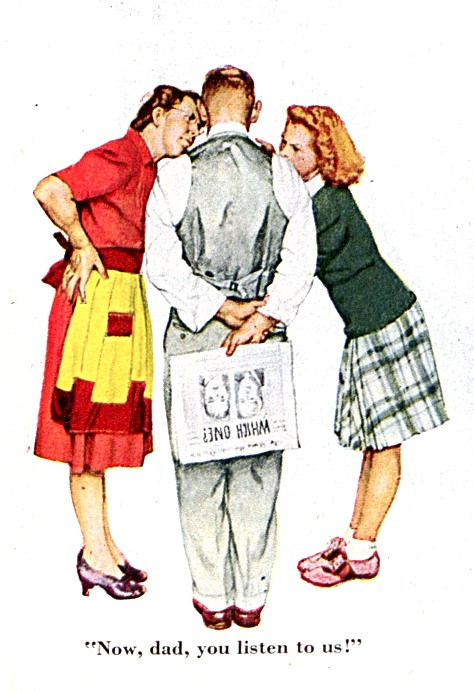
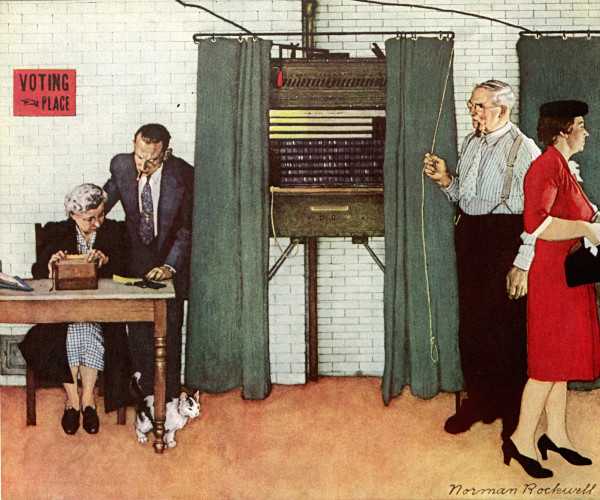
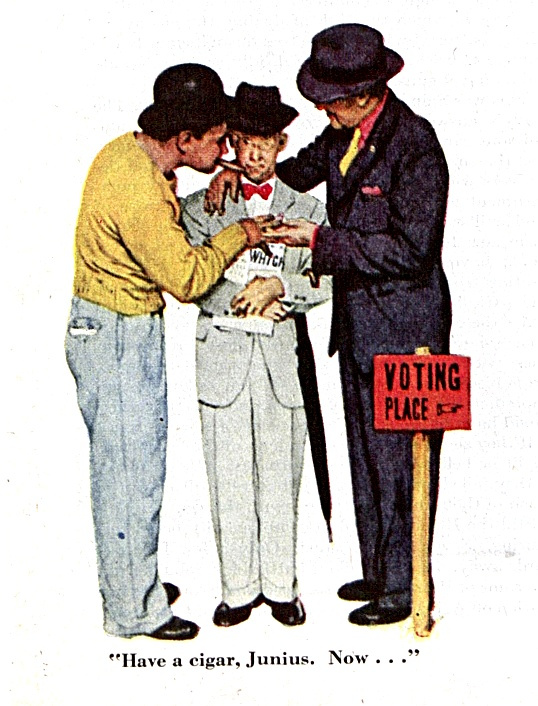
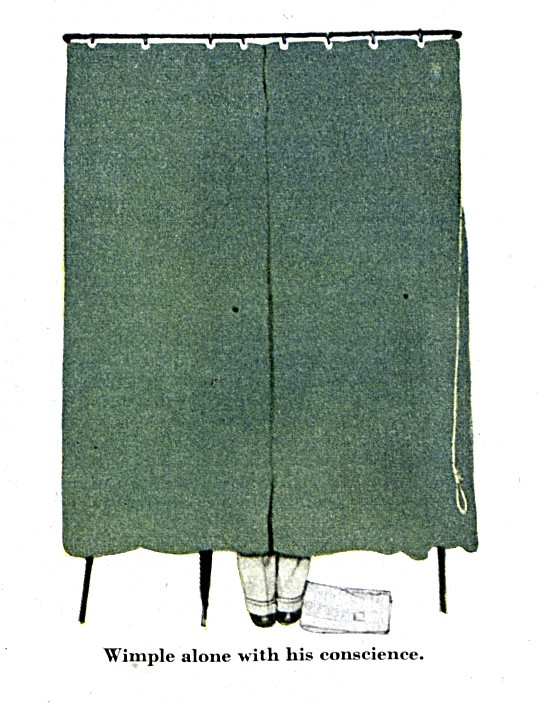
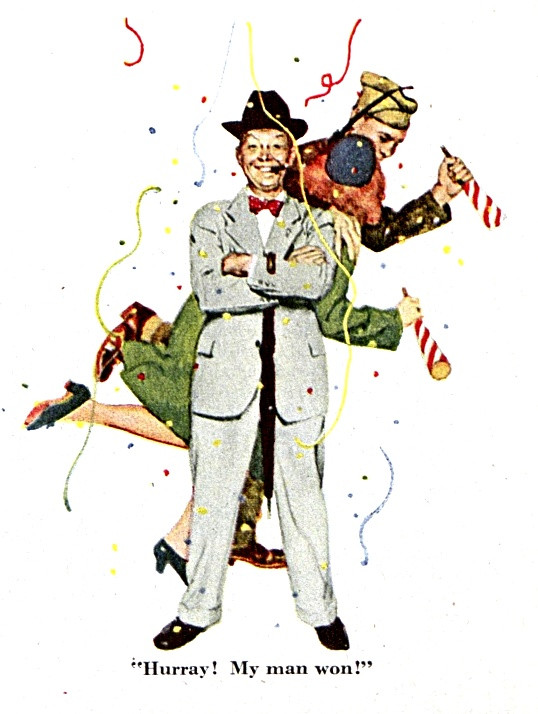
Rockwell Video Minute: Arguing Politics Over Breakfast
See all of the videos in our Rockwell Video Minute series.
Featured image: Norman Rockwell / SEPS
Rockwell Files: Commuters
Norman Rockwell’s 1946 cover Commuters was a tribute to fellow artist and friend Anna “Grandma” Moses, who painted in a folk-art style, rarely using perspective to convey distance. Hence, her landscapes appeared flattened and tilted forward so everything in the panorama could be seen. Commuters uses a similar style to portray Tuckahoe, New York, a very flat town that rises here like an Alpine village in the background. But the improbable landscape allowed Rockwell to make all the houses and cars of the neighborhood visible.
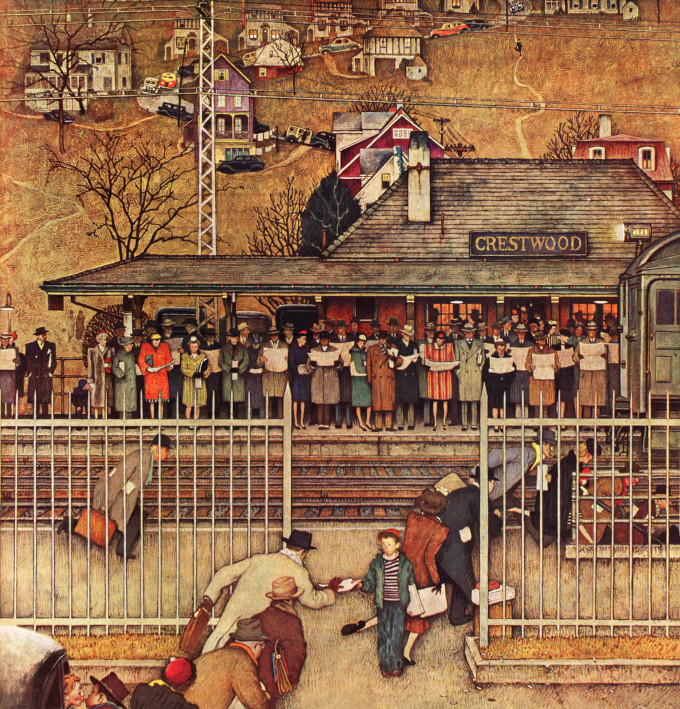
Grandma Moses, who only took up painting in her 70s, said she wanted her works to capture “how we used to live.” Similarly, Rockwell’s cover evokes a morning rush hour from 74 years ago that takes us back in time. Reflecting the rising postwar flight to the suburbs, Crestwood Station, a stop on the Harlem Line into New York, is crowded with well-dressed commuters. Notice how, in those days, hats were de rigueur out of doors — one exception being the housewife in curlers kissing her husband goodbye (bottom left). For a parallel to the modern commuter, notice the rapt attention each one has to their own newspaper — no socializing, no chatter. Today, of course, all that attention would be devoted to a phone.
Featured image: Norman Rockwell / SEPS
This article is featured in the September/October 2020 issue of The Saturday Evening Post. Subscribe to the magazine for more art, inspiring stories, fiction, humor, and features from our archives.
Rockwell Video Minute: Cousin Reginald
See all of the videos in our Rockwell Video Minute series.
Featured image: Norman Rockwell / SEPS
Rockwell Video Minute: G.I. Homecoming
See all of the videos in our Rockwell Video Minute series.
Music Credit: Brotherhood by Monplaisir, licensed under a CC0 1.0 Universal License
Featured image: Norman Rockwell / SEPS
Rockwell Files: Reflections of a Hero
Homecoming soldiers were a popular subject for illustrators in 1945. But for this end-of-war cover, Rockwell took an unusual approach to capturing a veteran’s welcome home.
A traditional cover would have shown a G.I. standing tall and proud among civilian admirers, and Rockwell had produced a cover like that after the last war. It showed a tough, confident doughboy surrounded by adoring younger boys. But at the end of this world war, he gives us a slim, young Marine sitting on a box. As if to emphasize his youth, he is seated beside a little boy who is mimicking his pose.
The newspaper on the wall gives us his back story: The mechanic who’d enlisted for the war has now returned a hero, probably from the Asian theater, judging by the flag he is holding. But, instead of recounting tales of glory, he is looking up with a thoughtful, almost troubled expression at the boy who has just asked him a question.
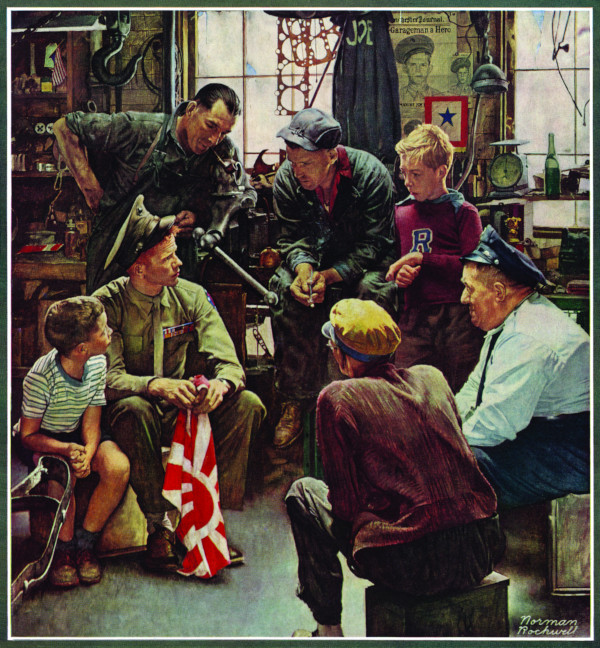
Rockwell was a master at conveying the subtleties of human expression, and it’s clear his intention wasn’t merely to show a hometown boy back in familiar surroundings, but also to capture the newly returned veteran’s feeling of isolation — knowing he can never adequately convey to the folks at home the things he experienced in the war.
This article is featured in the July/August 2020 issue of The Saturday Evening Post. Subscribe to the magazine for more art, inspiring stories, fiction, humor, and features from our archives.
Featured image: (Norman Rockwell / SEPS)
Rockwell Video Minute: Freedom from Fear
See all of the videos in our Rockwell Video Minute series.
Featured image: Norman Rockwell’s Freedom From Fear (Norman Rockwell / SEPS)
Rockwell Video Minute: April Fool’s Day
To study the covers in more detail and see all of the answers, visit saturdayeveningpost.com/fool.
See all of the videos in our Rockwell Video Minute series.
Featured image: © SEPS; Image of the sculpture “Coming to the Parson (patented 1870)” by John Rogers, painted plaster in the Delaware Art Museum Wilmington, Delaware, Photo Ad Meskens of a sculpture by John Rogers via the Creative Commons Attribution-Share Alike 3.0 Unported license.
Rockwell Files: Gary Cooper Puts On a Good Face
In 1930, Norman Rockwell traveled to California on the advice of his lawyer, who wanted the artist out of his home state of Vermont while he, the lawyer, settled a contract lawsuit with another magazine.
Rockwell stayed with friends who lived near Hollywood. He was fascinated by the extras and out-of-work actors he saw on the streets. Back home, he relied on neighbors for his models. Here, if he needed any type of face or character, he only had to walk around town to find what he wanted.
But when he got the idea for this cover, he asked the friend he was visiting to help him find a cowboy actor. Rockwell was stunned when Paramount Studios offered the services of their mega-star Gary Cooper.
When Cooper showed up for the modeling session, Rockwell later wrote, he filled the doorway, making Rockwell keenly aware of his own “narrow shoulders and puny arms.” But during three days of modeling, Cooper proved to be easy-going, very cooperative, and a practical joker who brought along exploding matches and ash trays that jumped when they were touched.
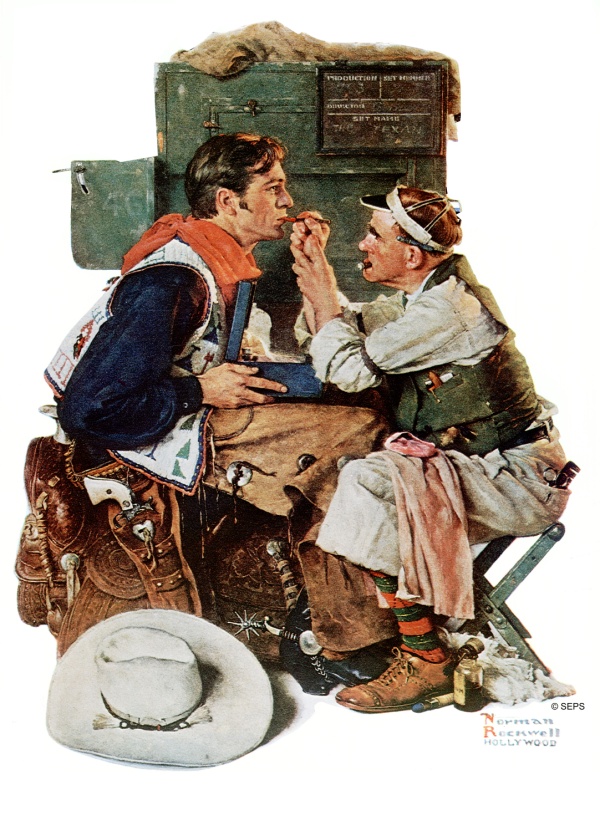
Probably in gratitude to Paramount, Rockwell put the name of Cooper’s latest movie, The Texan, on the slate in the background. The movie premiered shortly before this issue appeared on the newsstands.
Movie stars weren’t the only people who impressed Rockwell in California. He also met a school teacher there, Mary Barstow, who later returned east with him as his new wife.
Featured image: Norman Rockwell / SEPS
This article is featured in the March/April 2020 issue of The Saturday Evening Post. Subscribe to the magazine for more art, inspiring stories, fiction, humor, and features from our archives.
Rockwell Video Minute: The Tattoo Artist
See all of the videos in our Rockwell Video Minute series.
Featured image: Norman Rockwell / SEPS
Rockwell Files: After the Prom
Rockwell freely admitted he painted “life as I would like it to be.” But in the case of this cover painting from May 25, 1957, it was no simple matter. It took a masterful sense of staging, lighting, and careful execution to share with viewers his sense of an idealized world.
He starts with the happiness of two young people as they enjoy a night of feeling “grown up.” He emphasizes the magic of the evening by contrasting them against the mundane world of a dingy truck stop.
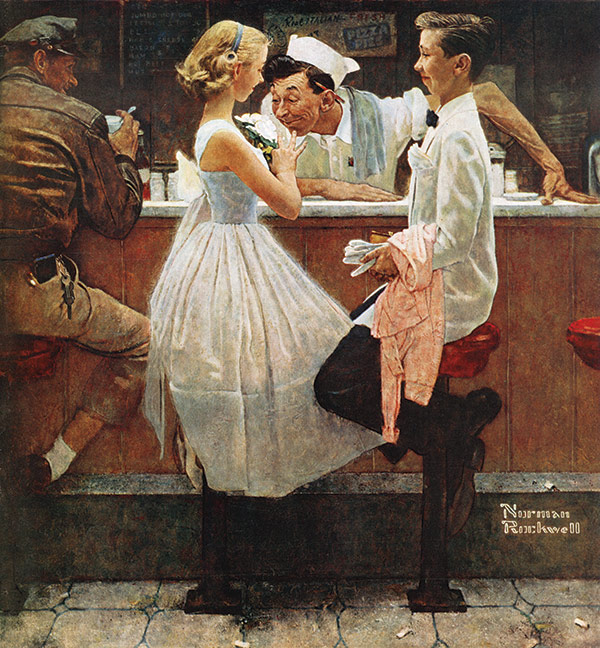
He draws attention to their youth and innocence by dressing both in gleaming white. And he sets them beneath a beam of light from above that illuminates them and the appreciative cook. They are undisturbed by other customers, and even though Rockwell puts a dirty floor beneath them, they seem set apart from the dark interior in this perfect moment. Rockwell even echoes the viewer’s reaction by adding a bemused truck-driving spectator. Like him, we might observe this unforgettable moment with a smile of recognition, and perhaps recollections of our own.
This article is featured in the January/February 2020 issue of The Saturday Evening Post. Subscribe to the magazine for more art, inspiring stories, fiction, humor, and features from our archives.
Featured image: Norman Rockwell / SEPS
Rockwell Draws the Common Cold
We drink plenty of liquids, wash our hands, avoid crowds, and what happens? In spite of every precaution almost all of us sooner or later come down with a common cold. In these sketches Norman Rockwell shows that this uncommonly annoying affliction succeeds in ruffling our dignity and spoiling our fun.
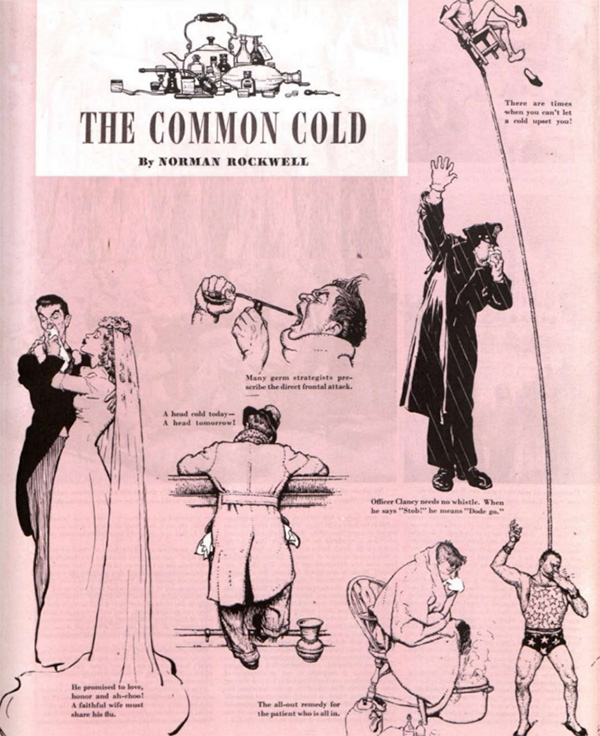
Featured image: Norman Rockwell / SEPS
Rockwell Video Minute: Rockwell and Charles Dickens
See all of the videos in our Rockwell Video Minute series.
Featured image: Norman Rockwell / SEPS
Gallery: Heartwarming Christmas Traditions
Christmas is a season outside of time. Each holiday is new and fresh while at the same time connecting u to every other Christmas we’ve ever known. So each holiday season brings with it not just joyful moments but a generous helping of the past.
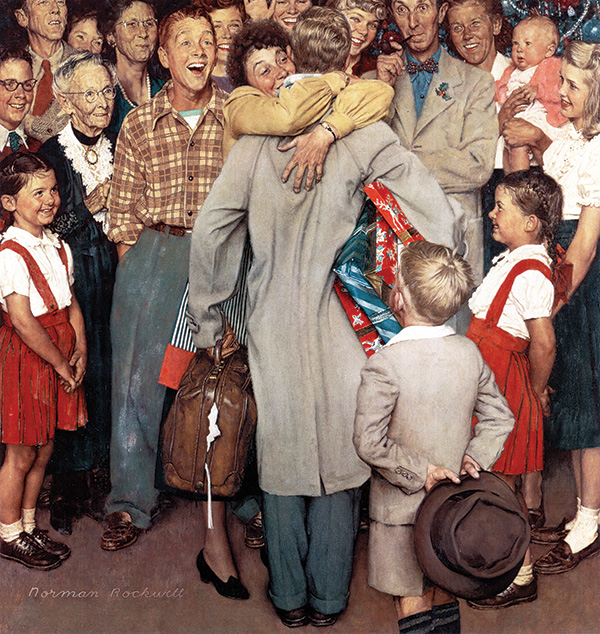
Norman Rockwell
December 25, 1948
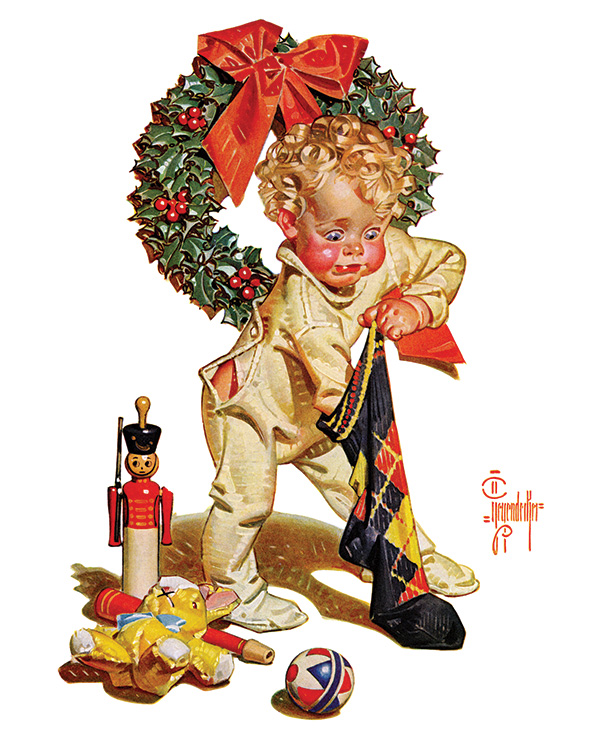
J.C. Leyendecker
December 24, 1938
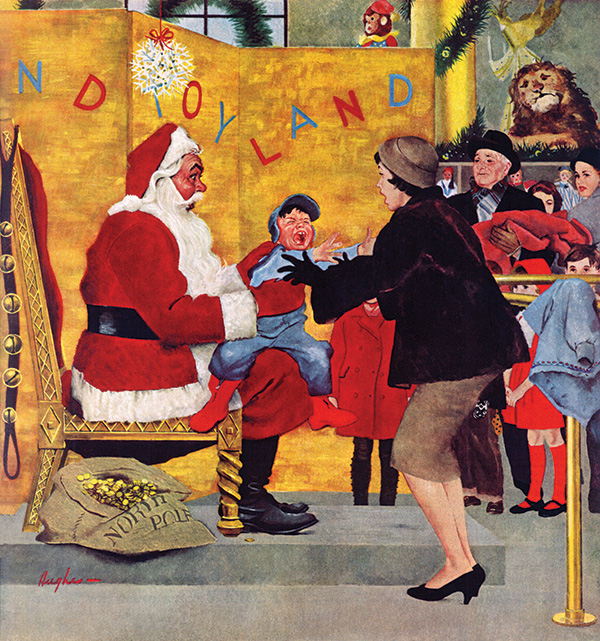
George Hughes
December 6, 1958
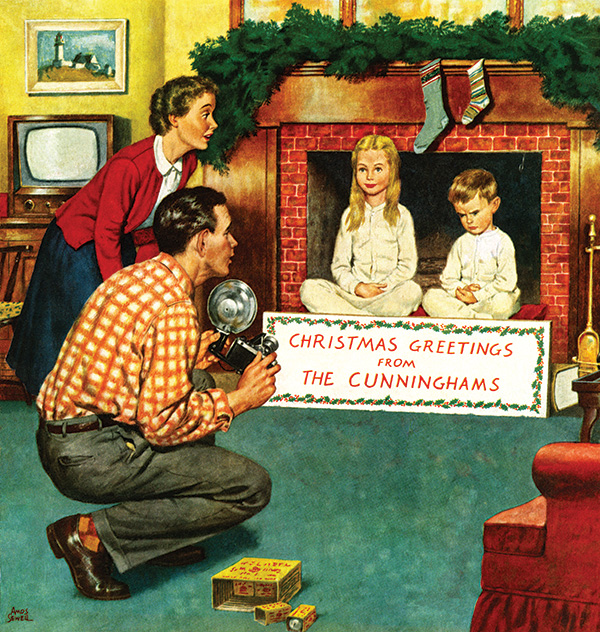
Amos Sewell
December 11, 1954
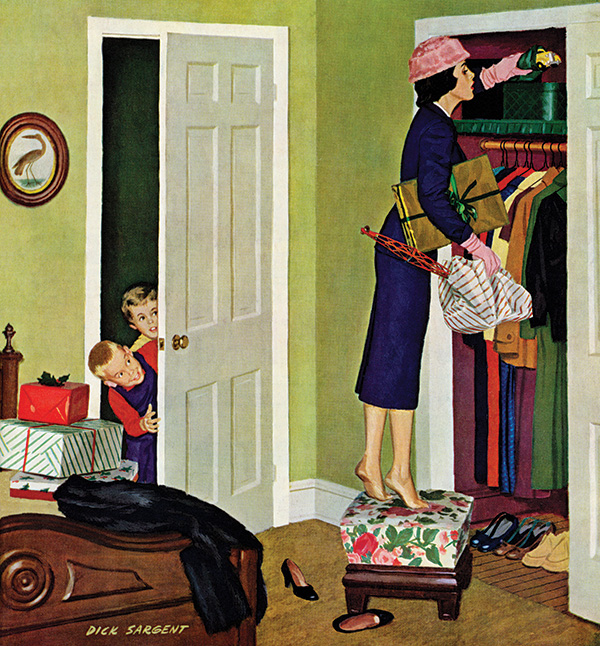
Richard Sargent
December 7, 1957
Christmas planning can be a joy, but it often veers towards comedy. In the hands of Post cover artists, the experience is presented in equal parts delight, misery, and silliness.
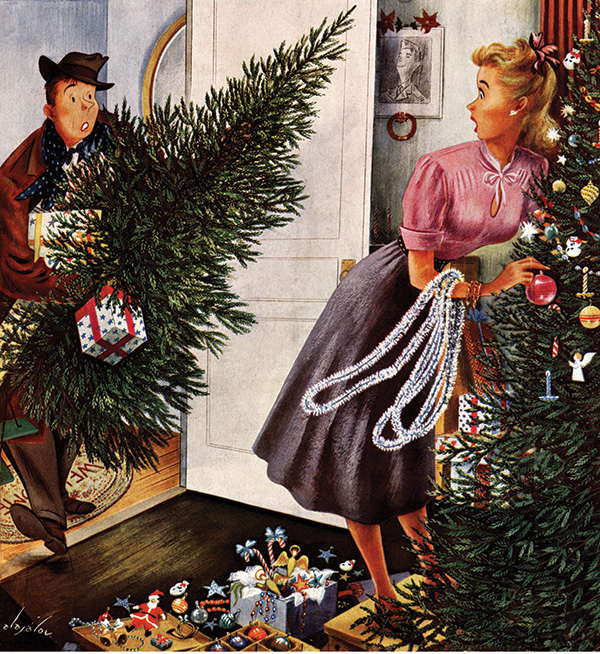
Constantin Alajálov
December 23, 1950
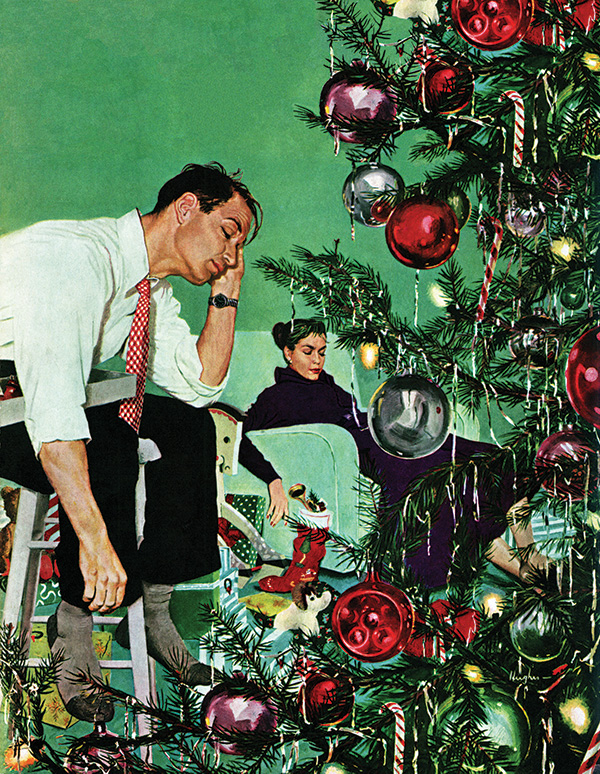
George Hughes
December 1949
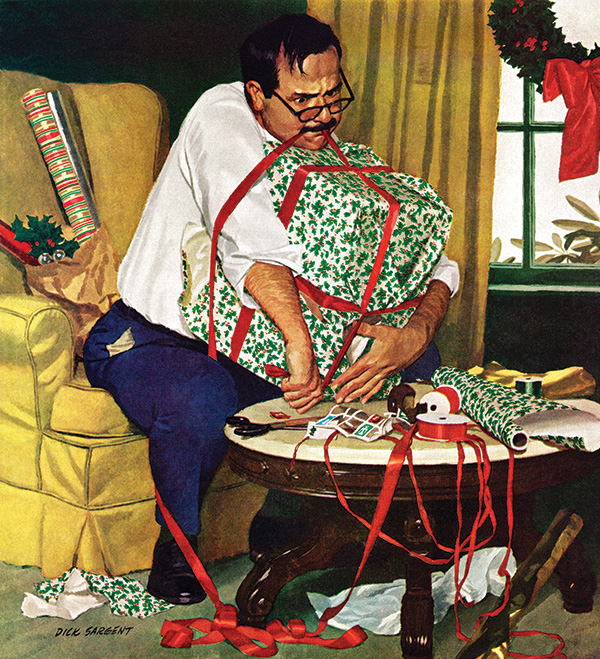
Richard Sargent
December 19, 1959
If the windup to Christmas is hectic and exhausting, John Falter’s cover reminds us what an amazing spectacle the holiday is to children. In their cautious, pajama’d descent down the staircase at first light, one can almost feel their joy that, after weeks of longing and anticipation, the magical day has finally arrived.
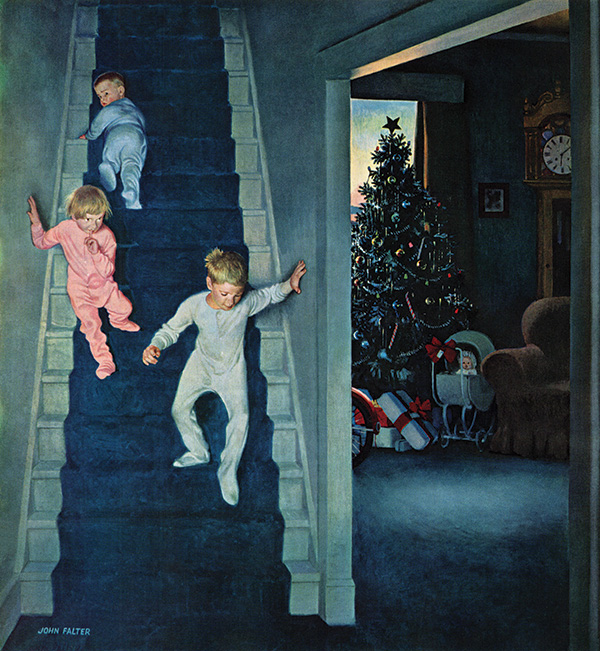
John Falter
December 24, 1955
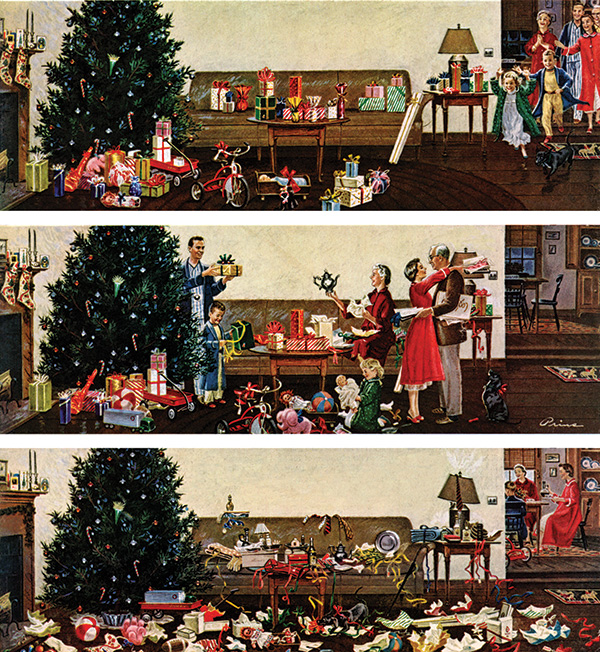
Ben Kimberly Prins
December 27, 1958
This article is featured in the November/December 2019 issue of The Saturday Evening Post. Subscribe to the magazine for more art, inspiring stories, fiction, humor, and features from our archives.
Featured image and artwork: SEPS.